A recent article featured in National Real Estate Investor (NREI) online looks at the difficulty, as well as the methodology, of finding “lucrative value-add” multifamily deals at this point in the cycle. BAM founder and CEO, Ivan Barratt, has offered his own take on how to find good deals in any market. We look at what the NREI piece recommends, vs BAM’s strategy for finding good deals, in today’s BAM blog…
Choosing the Right Property
According to the NREI piece, with competition for good deals being fierce, some investors are choosing more heavy value-add projects, including extensive remodels and re-purposing of properties into multifamily units. The NREI viewpoint article contends that using strategy to identify and refresh “vintage communities” is a viable alternative to the more heavy value-add projects at this point in the cycle. BAM’s own Ivan Barratt has discussed not looking at heavy value-add projects and sticking with finding good workforce housing deals in the right area, which the NREI piece addresses.
It’s (Still) All About Location
It’s never a surprise when real estate comes down to location, and so it does in finding a good deal at this point in the cycle. Finding the right multifamily deal often comes down to ensuring that the location is ideal. The NREI piece suggests that one way to do that is to find submarkets that have shown consistent year-over-year growth, and are also located in areas with a high quality of life. Ivan has discussed this as well: he’s often talked about how BAM is choosy about location. When looking at any potential investment, they’ll look to see if the area is near transportation, employment, and they always look for a good school district. BAM doesn’t look for affordable deals, in low-quality school and high crime areas. In other words, finding the right mix of quality of life, rental demand, good schools, and growth is paramount when looking for a good deal.
Look for Potential
The NREI piece recommends looking for properties with potential; they suggest looking for those that are “under-maintained, under-managed” as well as “under-amenitized.” For these properties, NREI is referring to those which may be under family management, and need minor, basic upgrades such as paint, signage, modern online bill pay, etc. When Ivan discusses what BAM looks for, he doesn’t refer to properties that are under-managed, but rather that BAM looks for those that are already operating like a “well-run business.” While there may always be room for improvement in operations, finding a property that hasn’t been managed well isn’t key to BAM’s multifamily asset search tactics. Ivan has discussed performing less intensive value-add work, such as adding amenities and improvements such as doors, new hardware, flooring, paint, and has even noted that nationwide, pet amenities have proven more popular with residents than any other type! Furthermore, by sticking with the workforce housing asset class, which are traditionally older, but maintained properties, BAM has found a niche which is always in high-demand and able to ride out economic storms far better than other asset classes.
The BAM Bottom Line: By identifying the right areas which are growing and offer good school systems, employment, and transportation, the right property type (asset class), and those managed like a well-run business, you increase your odds of landing a solid multifamily deal at any point in the cycle.
To learn more about multifamily investing, visit www.ivanbarratteducation.com!



